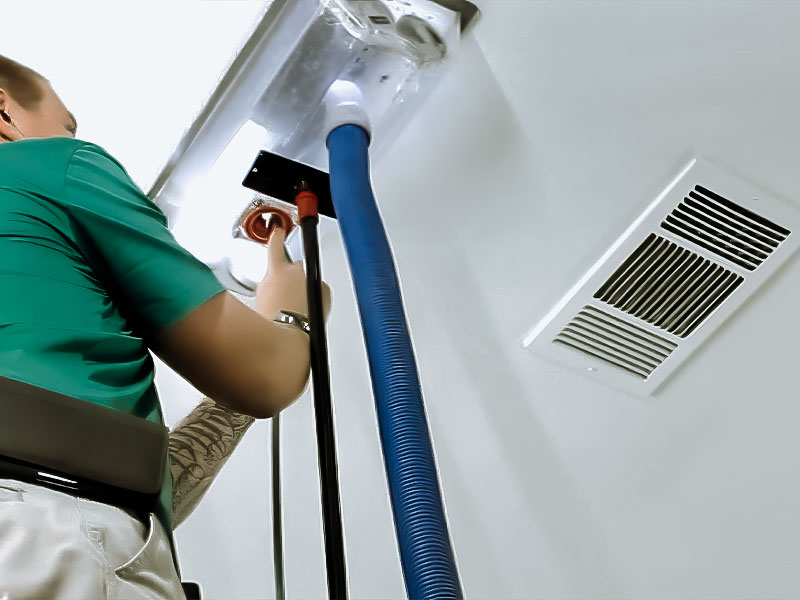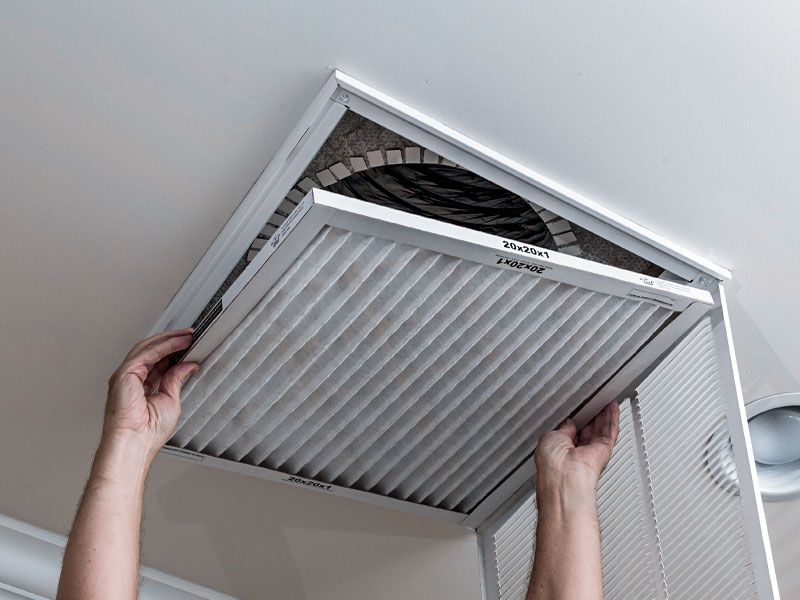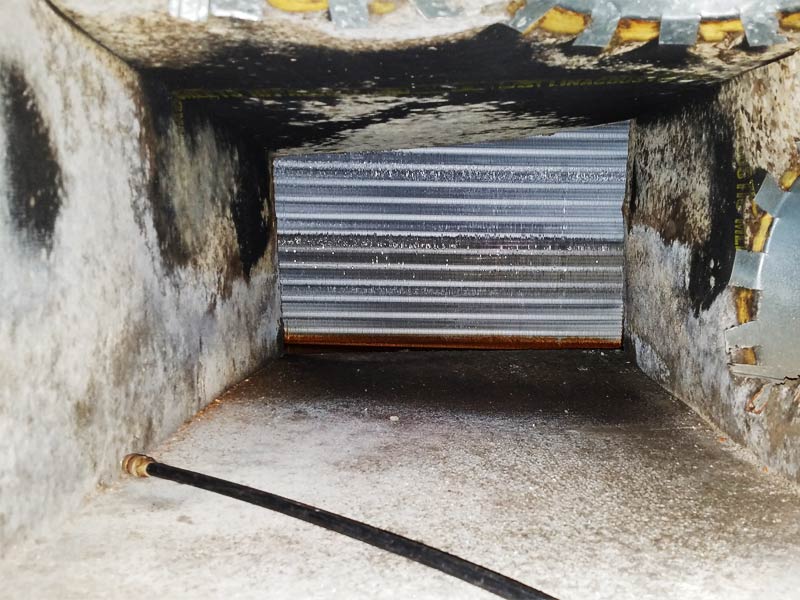The Importance of Professional Air Duct Cleaning
Before delving into techniques, it helps to understand what’s at stake. Your home’s cooling and heating system circulates air through an intricate network of metal or flexible ducts to distribute conditioned air. Over time, these ducts collect particulate matter, allergens and other pollutants. A buildup of only 1/32nd of an inch of dirt can reduce HVAC efficiency by 21%!
What’s worse, dirty ducts blow contaminants straight into living areas. This causes a variety of health issues, ranging from aggravating allergies to triggering asthma attacks. Regular cleaning keeps ducts working properly and your household breathing easier. The National Air Duct Cleaners Association (NADCA) recommends professional duct cleaning every 3-5 years.
From my experience, I can tell you that you should have your HVAC system and ducts inspected every 3-5 years. Air ducts should be cleaned once every 8-10 years. If your HVAC system requires more frequent cleaning, there may be a problem with airflow filtration or leaks in the system.
It is also important to realize that air duct cleaning should not be limited to just duct cleaning, it should include a comprehensive cleaning of all elements of the HVAC system:
- ductwork cleaning;
- coils cleaning;
- drain pan cleaning;
- registers and grills cleaning;
- air plenum cleaning;
- blower motor cleaning;
- heat exchanger cleaning;
- air filter change.
Different Air Duct Cleaning Methods
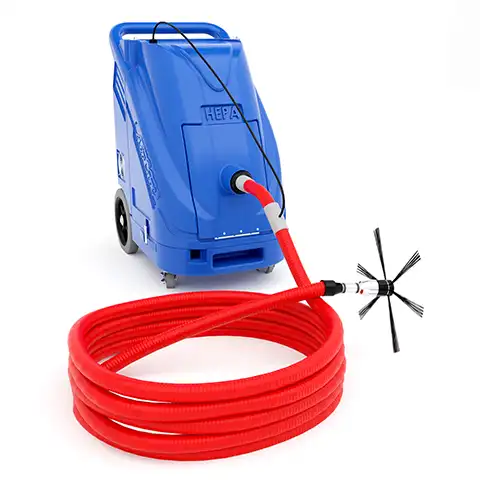
Vacuum & Brush Method Air Duct Cleaning
The Vacuum & Brush Method is a comprehensive and systematic approach to air duct cleaning that combines the power of suction with mechanical agitation. This method involves the use of specialized equipment, including high-powered vacuums and rotating brushes, to remove accumulated debris, dust, and contaminants from the ac ducts.
The Vacuum Component:
The vacuum component of this method is designed to create negative pressure within the air ducts. This negative pressure serves two crucial purposes: firstly, it ensures that dislodged particles are effectively captured and removed, and secondly, it prevents the released contaminants from circulating back into the living or working space. The strength of the vacuum is a key factor in the success of this method, as it determines the thoroughness of debris extraction.
The Brush Component:
Complementing the vacuum, the brush component involves the use of rotating brushes that mechanically agitate the interior surfaces of the ductwork. These brushes dislodge stubborn debris and contaminants that may have adhered to the duct walls over time. The mechanical action of the brushes ensures a more thorough cleaning compared to methods that rely solely on suction.
Advantages of the Vacuum & Brush Method: Comprehensive Debris Removal:
- Comprehensive Debris Removal:
- The combination of vacuum suction and mechanical brushing ensures a more thorough removal of dust, dirt, and contaminants from the air ducts.
- Preventing Cross-Contamination:
- The negative pressure created by the vacuum prevents released particles from being reintroduced into the indoor environment, minimizing the risk of cross-contamination.
- Effective Against Stubborn Debris:
- The mechanical action of the rotating brushes is particularly effective against stubborn debris and contaminants that may have adhered to the duct surfaces.
- Versatility Across Duct Types:
- The Vacuum & Brush Method is versatile and can be applied to various types of ductwork, including flexible and rigid ducts.
Disadvantages of the Vacuum & Brush Method:
- The thickness of the vacuum hose makes it impossible to clean thin ac ducts;
- Possible incomplete cleaning along the entire length of the ducts, especially if the flexible duct has splitters and steep bends. In this case, it is necessary to clean the ducts from different sides (both from the side of the ventilation grille and from the side of the plenum box).
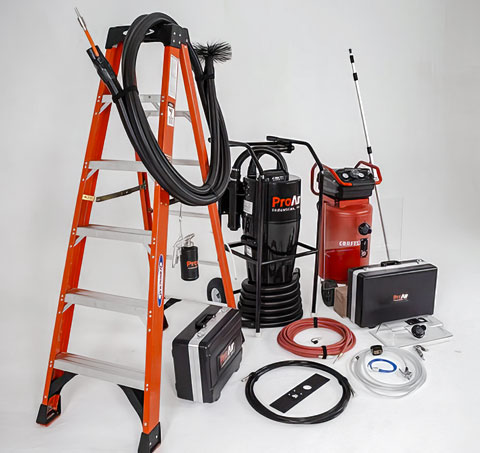
Mechanical Agitation, Air Sweep, Negative Air Pressure Method:
Among the arsenal of techniques utilized by professionals, the combination of Mechanical Agitation, Air Sweep, and Negative Pressure stands out as a comprehensive and effective approach.
Mechanical Agitation:
Mechanical agitation involves the use of specialized tools equipped with rotating brushes or air whips. These tools are introduced into the ductwork, mechanically dislodging and agitating contaminants adhered to the inner surfaces. The mechanical action ensures a more thorough removal of stubborn debris, preparing it for extraction.
Air Sweep Compressed Air:
Compressed air nozzles complements mechanical agitation by introducing a controlled stream of compressed air into the ducts. This gentle yet forceful airflow dislodges and propels the loosened particles towards the vacuum source. The air sweep ensures that even fine particles are lifted and carried away, preventing them from settling back within the duct system.
Negative Pressure:
Integral to the method is the creation of negative pressure within the ductwork. A high-powered vacuum is strategically positioned to create suction throughout the system. This negative pressure not only facilitates the removal of dislodged particles but also prevents them from escaping into the indoor environment during the cleaning process.
Advantages of Mechanical Agitation, Air Sweep, and Negative Air Pressure Method:
- Thorough Contaminant Removal:
- The combination of mechanical agitation and air sweep ensures a comprehensive removal of contaminants, including stubborn debris and fine particles.
- Minimized Cross-Contamination:
- The negative pressure created prevents released particles from being reintroduced into the indoor environment, minimizing the risk of cross-contamination.
- Effective Against Mold and Allergens:
- The mechanical action and air sweep are particularly effective against mold and allergens, providing a more thorough cleaning for improved indoor air quality.
- Versatility Across Duct Types:
- This method is adaptable to various types of ductwork, making it suitable for both residential and commercial HVAC systems.
- Efficient Cleaning Process:
- The synergy of mechanical agitation, air sweep, and negative pressure streamlines the cleaning process, ensuring a more efficient and effective result.
Source Removal Method:
The Source Removal Method is characterized by its targeted and systematic approach to eliminating contaminants directly from the air duct system. Unlike some methods that rely on agitation or airflow, this approach places a strong emphasis on physically extracting pollutants, leaving the ductwork pristine.
Advantages of the Source Removal Method:
- Precise Contaminant Removal:
- By directly targeting and physically extracting contaminants, the method ensures precise removal, leaving no room for residual particles.
- Comprehensive Cleaning:
- The systematic approach allows for a comprehensive cleaning of the entire duct system, addressing localized issues effectively.
- Ideal for Mold and Bacterial Contaminants:
- Particularly effective for duct systems plagued by mold, bacteria, or other microbial contaminants, the method eradicates these issues at their source.
- Reduced Risk of Cross-Contamination:
- As contaminants are physically extracted, the risk of cross-contamination is minimized, contributing to a safer and healthier indoor environment.
- Extended System Lifespan:
- The removal of contaminants at their source not only improves indoor air quality but also contributes to the longevity and efficiency of HVAC systems.
Elevating Indoor Air Quality through Informed Choices
Your home’s air ducts are the lungs providing filtered, comfortable air to your household. In the quest for the best air duct cleaning method, it’s essential to recognize that different methods have their merits, and the effectiveness of each depends on various factors. Whether opting for brush-based methods or compressed air techniques, the key lies in hiring professional air duct cleaning services who understand the intricacies of the cleaning process.
